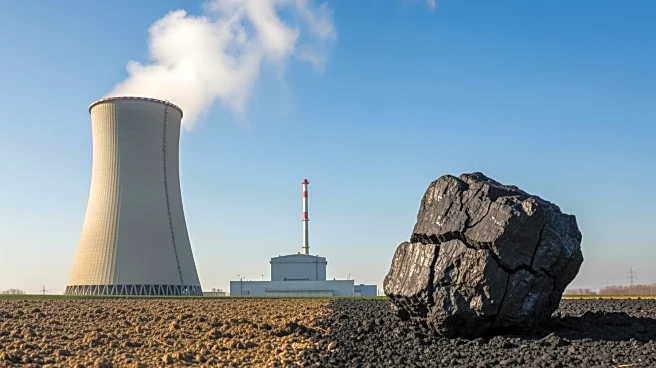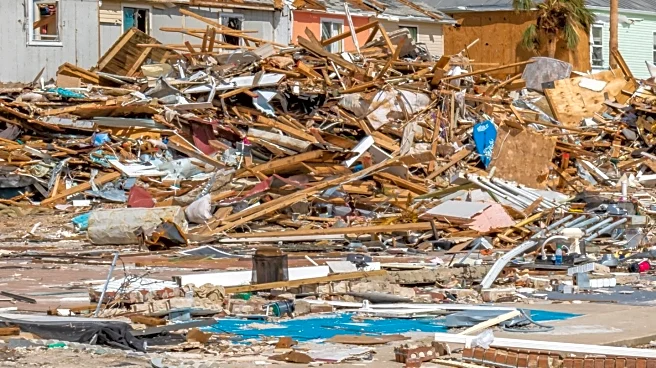What's Happening?
A study published in Nature examines the coupling and decoupling of humans and the built environment under disaster disturbances, focusing on Anhui Province in China. The research highlights how extreme
weather events, such as torrential rain and flooding, impact human mobility and the resilience of vulnerable groups. The study uses data from 2009 to 2020 to analyze the interaction between population distribution, economic activities, and social organizations during disasters. It employs models to assess the resilience of both human systems and infrastructure, providing insights into disaster preparedness and response.
Why It's Important?
Understanding the resilience of human and built environments during disasters is crucial for improving disaster management strategies. The study's findings can inform policies aimed at enhancing infrastructure resilience and social systems' adaptability to extreme weather events. As climate change increases the frequency and severity of such events globally, regions with similar geographical environments can benefit from the insights provided by this research. The study underscores the importance of integrating social and engineering resilience in disaster preparedness plans.
Beyond the Headlines
The research highlights the ethical and social dimensions of disaster resilience, emphasizing the need to protect vulnerable populations during extreme weather events. It suggests that improving infrastructure alone is insufficient; social systems must also be strengthened to ensure comprehensive disaster preparedness. The study's methodology, including the use of entropy weighting and coupling coordination models, offers a framework for analyzing resilience in other regions facing similar challenges.












